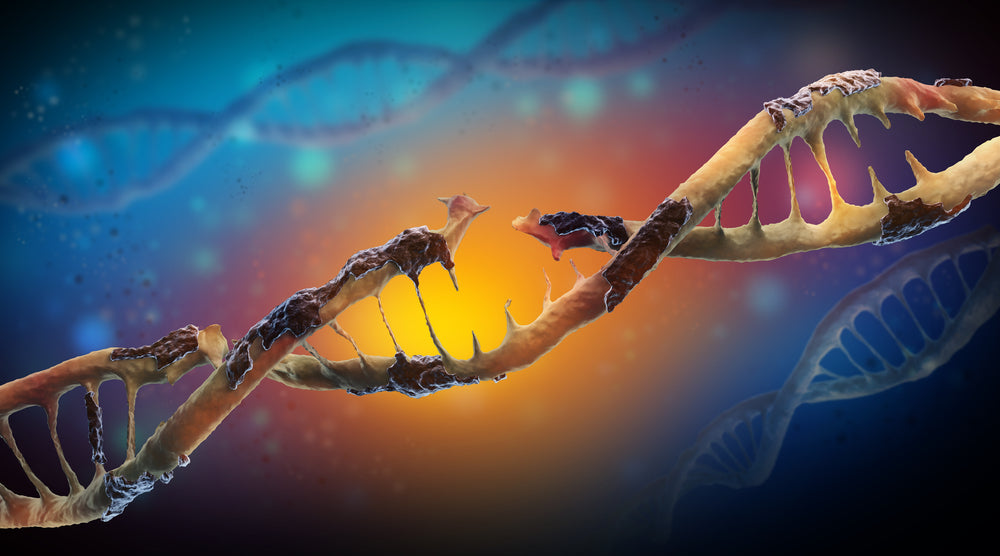
Beyond Oppenheimer: The Lasting Effects of Radiation on DNA
Arno SmitBeyond Oppenheimer - What was the effect of radiation exposure on DNA? What are the long-term health effects?
Christopher Nolan brings us a thrilling take on the story of the building of the atomic bomb. In his movie Oppenheimer, we explore the history of one of the most significant scientific advancements and the people who made it happen. The release of this film has raised many questions about the atomic bomb.
The Manhattan Project
The Manhattan Project, led by Julius Robert Oppenheimer, was an enormous investigation that led to the building of the atomic bomb. Costing nearly 2 billion US dollars (roughly 24 billion dollars in today’s money), the Manhattan Project brought together a group of scientists, engineers, and military personnel to work on various aspects of nuclear physics, engineering, and materials science. The project encompassed several key sites. Among them, Los Alamos, New Mexico, served as the location for designing and developing the bombs, while Oak Ridge, Tennessee, conducted uranium enrichment activities.
The Manhattan Project successfully created two types of atomic bombs: the uranium-235 bomb, known as "Little Boy," and the plutonium-239 bomb, known as "Fat Man." These bombs were dropped on the Japanese cities of Hiroshima and Nagasaki in August 1945, leading to Japan's surrender and the end of World War II.
The aftermath of the Manhattan Project is well written into history, but is it also written into our DNA, and what were the affects of radiation exposure on our DNA?
How Does Radiation Mutate DNA?
The process of radiation causing mutations in DNA is called ionizing radiation, and this occurs when radiation has enough energy to create charged particles called ions by removing the electrons from the atom. Ionizing radiation can directly affect the structure of the DNA by causing double-strand breaks (breaking both strands in the DNA double helix).
Ionizing radiation can also produce highly reactive molecules containing oxygen called reactive oxygen species (ROS), which can damage DNA by causing single-strand breaks or generating abasic sites (when the building blocks of DNA have an altered chemical structure). Fortunately, the cell has repair mechanisms to fix this DNA damage; unfortunately, the damage is sometimes repaired incorrectly, leading to DNA mutations.
Mutations can affect the functioning of genes, and depending on the location and nature of the mutation, they can have various consequences, ranging from no effect to causing diseases, including cancer. The types and severity of mutations depend on factors such as the radiation dose, the kind of radiation, the type of tissue exposed, and the individual's specific genetic makeup. High doses of ionizing radiation have a higher probability of causing significant DNA damage and mutations. However, radiation can also alter the genetic material of their reproductive cells (sperm or eggs), which could lead to mutations being transmitted to future generations.
During the Manhattan Project, teams of scientists focused on researching “health physics”, an overlap of nuclear science and medicine concerned with keeping Manhattan Project workers safe from radiation. Although effort was made to project the scientist, the radiation of nuclear weapons claimed and continues to claim many victims.
The Aftermath of Nuclear Weapons
“When you see something that is technically sweet, you go ahead and do it, and you argue about what to do about it only after you have had your technical success. That is the way it was with the atomic bomb.” – J.R. Oppenheimer.
For the survivors of the atomic bombs dropped on Hiroshima and Nagasaki, the most deadly long-term health effect was leukaemia. Roughly two years after the attacks, rates of leukaemia began to rise, and rates peaked around four to six years later. Sadly, children were the most severely affected. In 1956, there was an increase in other cancers, and tumor registries were started in both Hiroshima and Nagasaki to study cancer risks caused by radiation exposure on DNA. Yet, there is still no clear consensus on radiation exposure's impact on second-generation survivors.
On the other hand, the development of nuclear weapons in the United States involved the mining and processing of uranium by tens of thousands of workers, as well as nearly 200 atmospheric nuclear weapons tests conducted from 1945 to 1962. This led to major radiation exposure, the effects of which were overlooked at the time.
Studies have shown that people who worked in or lived close to the uranium mines in Arizona and New Mexico suffered greatly from health complications such as lung and stomach cancer. However, the Radiation Exposure Compensation Act (RECA) was passed on October 5, 1990, which awarded compensation for individuals who developed specific diseases due to radiation exposure. This act extended to uranium mineworkers, onsite participants at test sites and those who lived downwind of the Nevada Test Site.
A silver lining
Great efforts are being made by the Radiation Effects Research Foundation (RERF), a cooperative Japan-US research organization, to investigate the health effects of atomic bomb radiation. Studying survivors of the atomic bombs has allowed scientists to uncover valuable insight into the effects of radiation on health. This ensures that the suffering caused by the atomic bomb was not futile and that efforts can be taken to prevent a tragedy like this from recurring.
References
- https://www.ncbi.nlm.nih.gov/books/NBK218706/
- https://www.ncbi.nlm.nih.gov/pmc/articles/PMC4763322/#:~:text=Ionizing%20radiation%20directly%20affects%20DNA,single%20strand%20breaks%20(SSB).
- https://www.britannica.com/event/Manhattan-Project
- https://k1project.columbia.edu/news/hiroshima-and-nagasaki
- https://www.science.org/content/article/how-atomic-bomb-survivors-have-transformed-our-understanding-radiation-s-impacts
- https://www.rerf.or.jp/en/
- https://www.atomicarchive.com/resources/documents/med/med_chp22.html
- https://ahf.nuclearmuseum.org/ahf/history/uranium-mining/
- https://www.justice.gov/civil/common/reca
- https://ahf.nuclearmuseum.org/ahf/history/health-physics-nuclear-medicine-during-manhattan-project/#:~:text=The%20Manhattan%20Project%20leaders%20knew,protect%20their%20coworkers%20from%20radiation.
Written by: Jamie Fernandez, Content Specialist, B.Sc. in Genetics
Are you interested in exploring your own DNA? Explore BioCertica’s wide range of products and let us help you reach your true potential.



